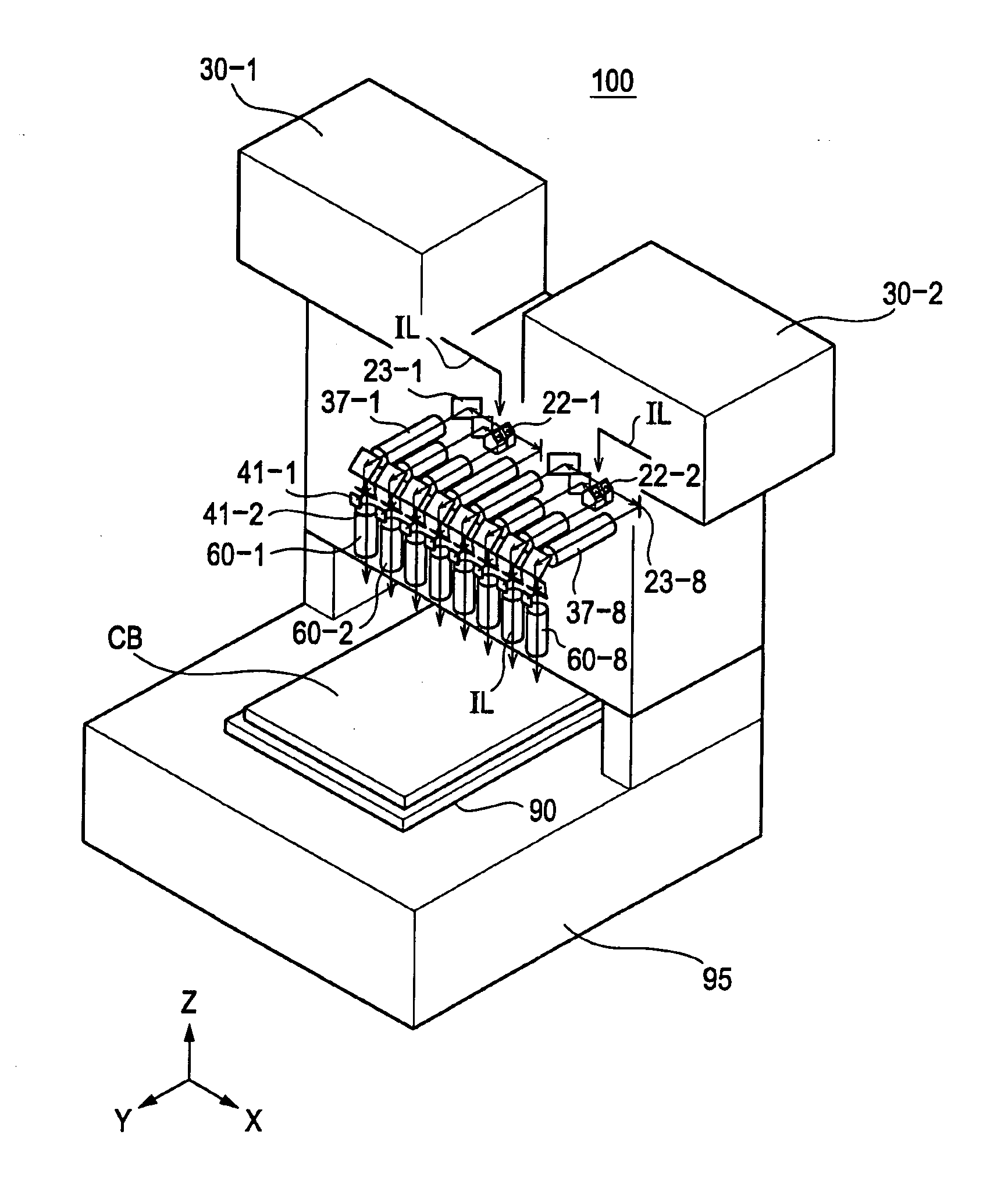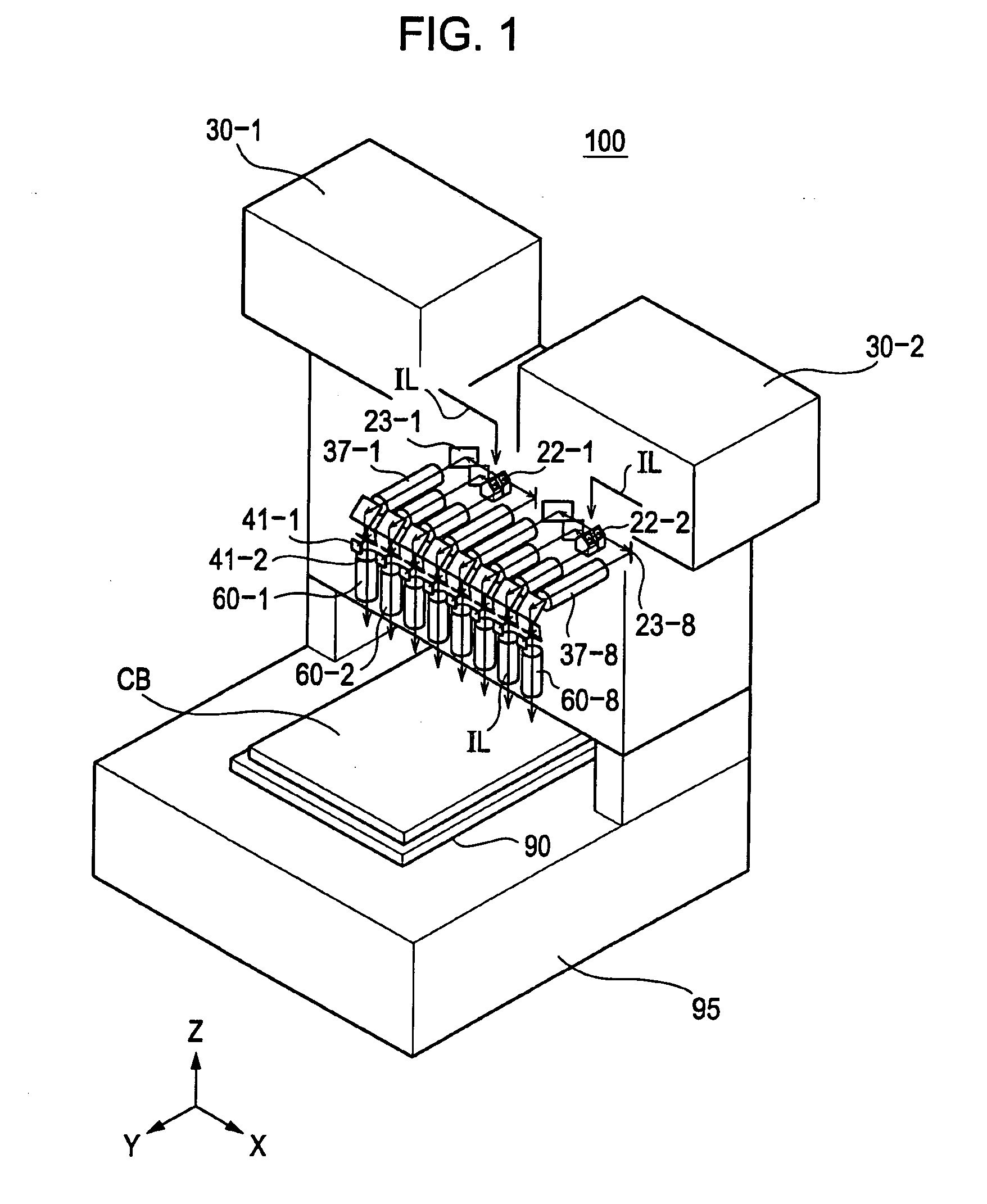Exposure device
a technology of exposure device and exposure process, which is applied in the direction of optical radiation measurement, instruments, photomechanical equipment, etc., can solve the problems of difficult preparation, exchange or maintenance, and the reaction speed of typical direct exposure device in forming pattern is low, and achieves stable exposure process and monitors the age deterioration of optical sources.
- Summary
- Abstract
- Description
- Claims
- Application Information
AI Technical Summary
Benefits of technology
Problems solved by technology
Method used
Image
Examples
Embodiment Construction
[0045]FIG. 1 schematically shows an exposure device 100 according to an embodiment of the present invention. This exposure device 100 mainly includes first lighting systems 30-1 and 30-2, second lighting systems 37-1 to 37-8, spatial light modulation systems (thereinafter referred to as “DMDs”) 41-1 to 41-8, projection optical systems 60-1 to 60-8, and an object table 90. The reason why the two first lighting systems (30-1 and 30-2) are used is to irradiate an object CB widely. These first lighting systems 30-1 and 30-2 contain a first high-pressure mercury lamp 10-1 and a second high-pressure mercury lamp 10-2 (see FIG. 2), respectively.
[0046]FIG. 2 schematically shows the first lighting systems 30-1 and 30-2. Since both lighting systems have the identical structure, only the first lighting system 30-1 will be described below.
[0047]In this drawing, the first high-pressure mercury lamp 10-1 is located at a primary focal point of an elliptic mirror 11-1. The elliptic mirror 11-1 refl...
PUM
 Login to View More
Login to View More Abstract
Description
Claims
Application Information
 Login to View More
Login to View More - R&D
- Intellectual Property
- Life Sciences
- Materials
- Tech Scout
- Unparalleled Data Quality
- Higher Quality Content
- 60% Fewer Hallucinations
Browse by: Latest US Patents, China's latest patents, Technical Efficacy Thesaurus, Application Domain, Technology Topic, Popular Technical Reports.
© 2025 PatSnap. All rights reserved.Legal|Privacy policy|Modern Slavery Act Transparency Statement|Sitemap|About US| Contact US: help@patsnap.com



